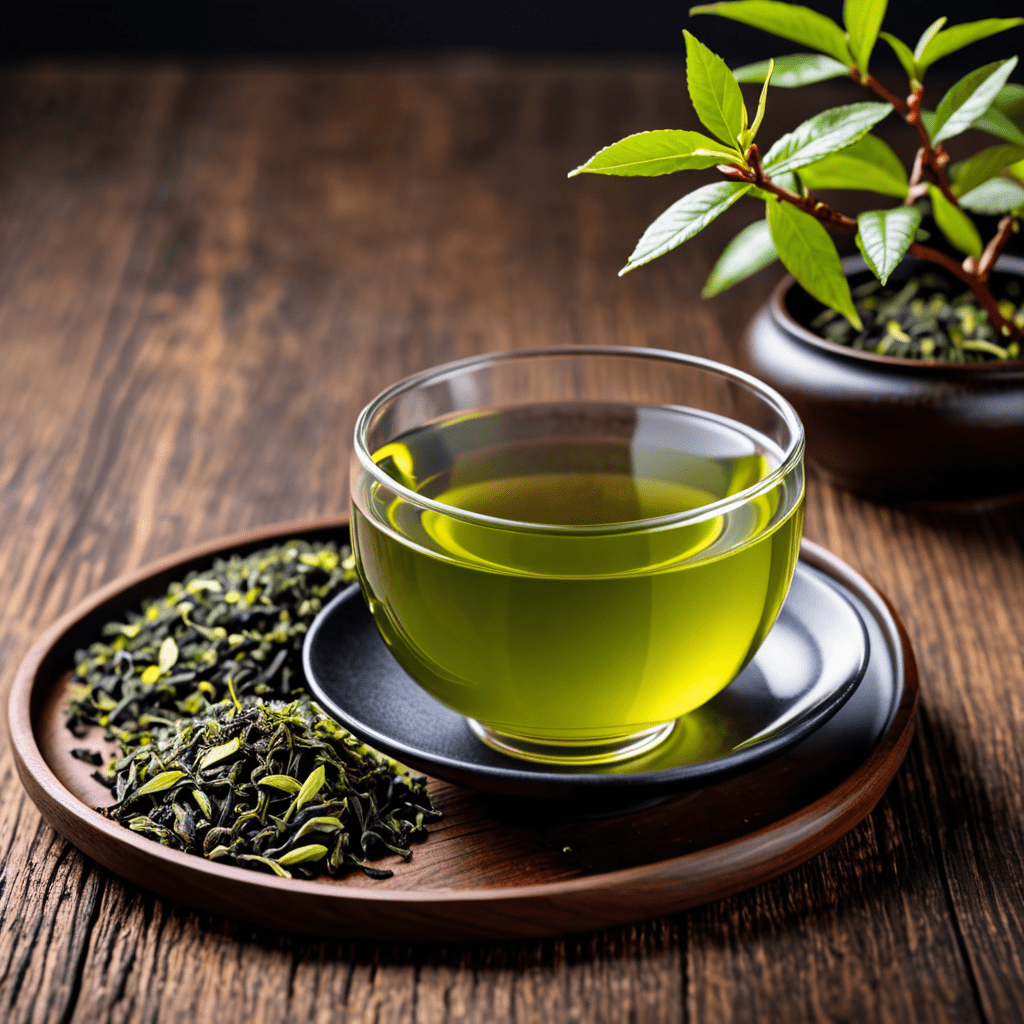
How is Green Tea Decaffeinated?
Many people enjoy the soothing and refreshing qualities of green tea but are concerned about its caffeine content. Luckily, there are methods to remove the caffeine from green tea while still maintaining its flavor and health benefits. In this article, we will explore the different techniques used to decaffeinate green tea and answer some common questions about the process.
1. Water Process
One method commonly used to decaffeinate green tea is called the water process. This method involves soaking the tea leaves in water to extract the caffeine. The water is then filtered through activated carbon to remove the caffeine molecules. Afterward, the tea leaves are reintroduced to the water, allowing them to reabsorb the flavor compounds that were lost during the decaffeination process. This method is considered a natural and chemical-free way of decaffeinating green tea.
2. Carbon Dioxide (CO2) Method
Another popular decaffeination technique for green tea utilizes carbon dioxide (CO2). In this method, liquid CO2 is mixed with the tea leaves. Under specific temperature and pressure conditions, the CO2 acts as a solvent, selectively extracting the caffeine while leaving behind most of the flavor compounds. The CO2 is then evaporated, and the dry tea leaves are left with reduced caffeine content. This method is considered to be gentle and effective, preserving the tea’s original flavor.
3. Ethyl Acetate (EA) Method
The ethyl acetate (EA) method is a chemical solvent-based process used to decaffeinate green tea. This method involves treating the tea leaves with ethyl acetate, which selectively removes the caffeine molecules. Afterward, the tea leaves are steamed to remove any remaining traces of the solvent. While this method effectively removes caffeine, some argue that it may also remove some of the desirable flavor compounds, resulting in a slightly altered taste.
4. Methylene Chloride (MC) Method
The methylene chloride (MC) method is another solvent-based technique used for decaffeination. Similar to the ethyl acetate method, the tea leaves are treated with a chemical solvent – methylene chloride – to extract the caffeine. The solvent is then evaporated, leaving behind decaffeinated tea leaves. This method is known for being highly effective at removing caffeine but may also raise concerns about residual solvent traces. However, the final product is considered safe for consumption, as the levels of methylene chloride are strictly regulated.
5. Frequently Asked Questions (FAQ)
Q: Does decaffeinated green tea contain any caffeine?
A: While decaffeinated green tea is not completely caffeine-free, it typically contains significantly less caffeine than regular green tea. The exact amount can vary depending on the decaffeination method used and the brand of tea. However, most decaffeinated green teas contain about 2-4 milligrams of caffeine per cup, compared to the average 25-40 milligrams found in regular green tea.
Q: Are there any health benefits lost during the decaffeination process?
A: The decaffeination process does not significantly affect the health benefits of green tea. The antioxidants and other beneficial compounds present in green tea are largely retained even after decaffeination. However, it’s worth noting that some flavor compounds may be lost during the process, which can impact the taste and potential synergistic effects of different compounds in the tea.
Q: Are there any natural decaffeination methods for green tea?
A: Yes, the water process is considered a natural decaffeination method for green tea. It does not involve the use of chemical solvents and relies on water and activated carbon to remove caffeine. This method is often preferable for individuals seeking a chemical-free option.
Q: Does decaffeinated green tea taste different from regular green tea?
A: Decaffeinated green tea may have a slightly different taste compared to regular green tea. Some flavor compounds may be lost during the decaffeination process, which can alter the overall flavor profile. However, many people find that the difference is subtle and still enjoy the taste of decaffeinated green tea.
Q: Is decaffeinated green tea suitable for individuals sensitive to caffeine?
A: Decaffeinated green tea is a great option for individuals who are sensitive to caffeine or trying to limit their caffeine intake. While it may still contain trace amounts of caffeine, it is significantly lower than its regular counterpart. However, it’s always advisable to check the specific caffeine content of the tea to ensure it aligns with personal preferences.
Q: Can I decaffeinate green tea at home?
A: While it is technically possible to decaffeinate green tea at home, it is a complex and difficult process that requires specialized equipment and knowledge. It is generally more convenient and safer to purchase decaffeinated green tea from reputable brands or stores.
In conclusion, decaffeinated green tea offers a wonderful option for those who want to enjoy the taste and health benefits of green tea without the stimulating effects of caffeine. Whether using the water process, carbon dioxide method, or solvent-based techniques, the decaffeination process can reduce the caffeine content while largely preserving the tea’s flavor and health benefits. So, go ahead and indulge in a cup of decaffeinated green tea for a soothing and mindful experience!


